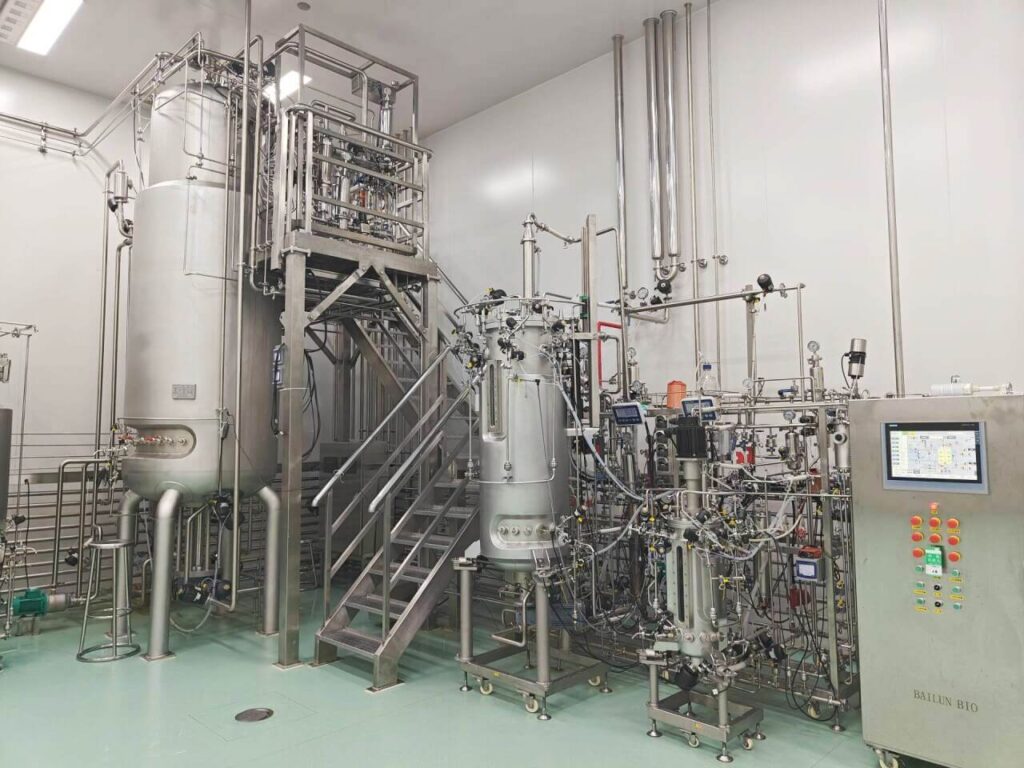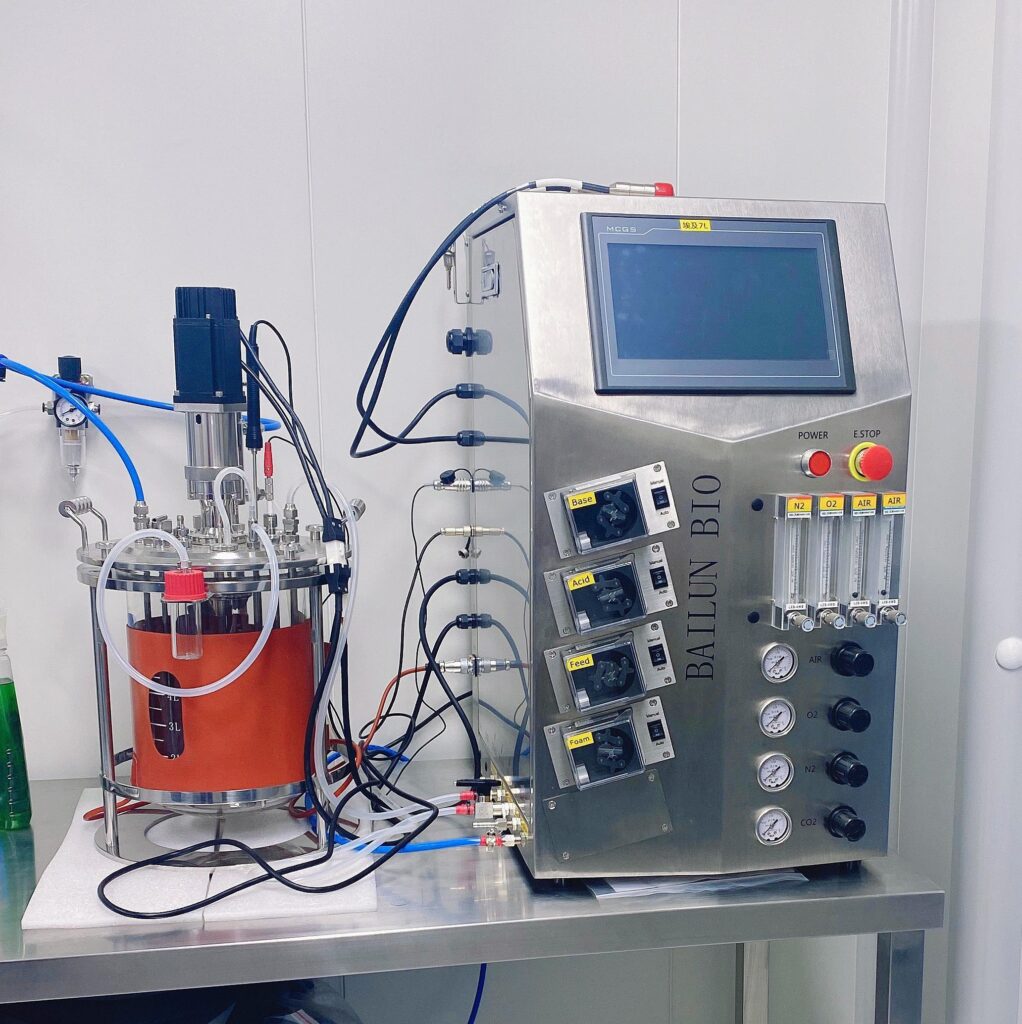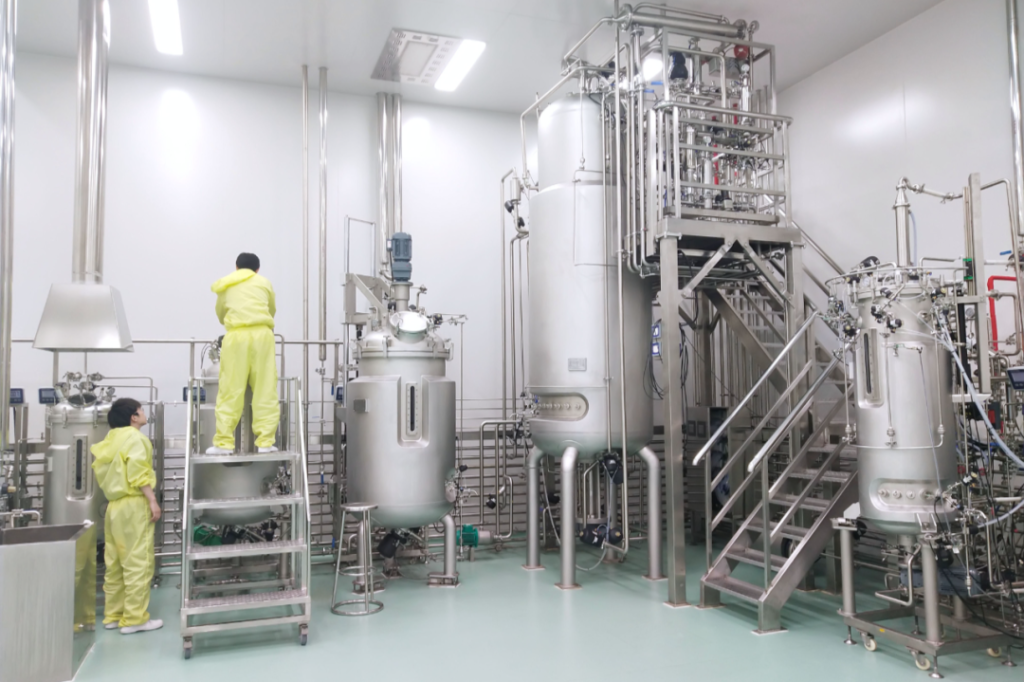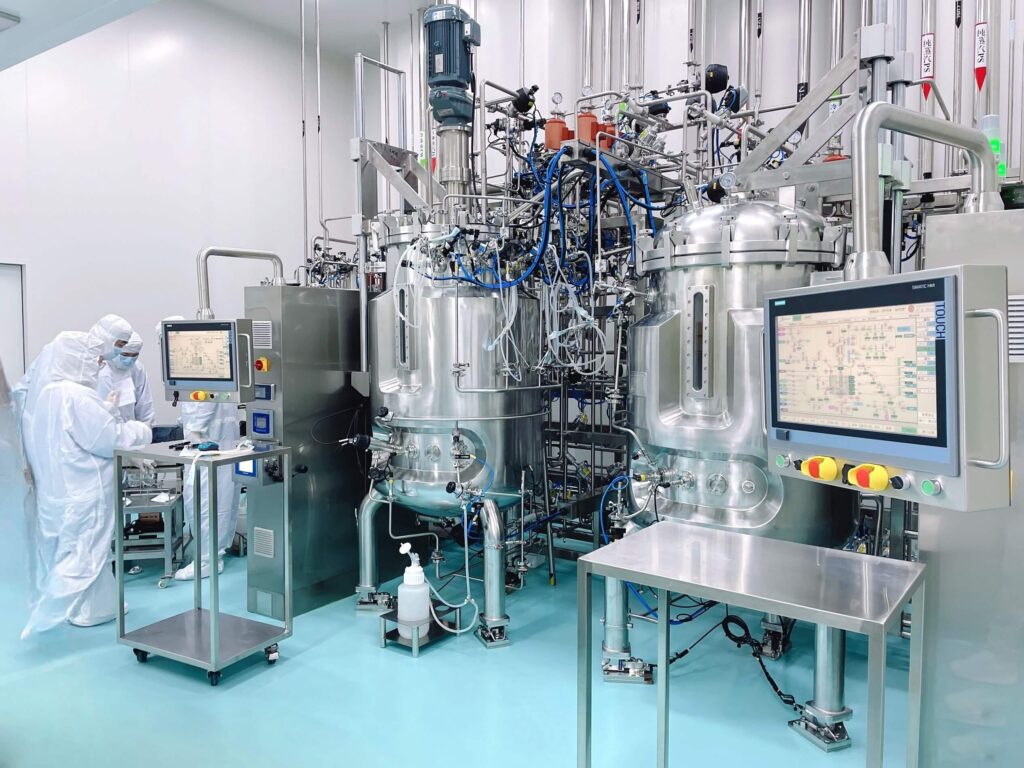
High-density cell culture technology
Also known as high-density fermentation technology, it refers to a bacterial culture technology that, under a specific culture system, by improving the culture method and culture conditions, significantly increases the density of bacterial fermentation and ultimately increases the particular productivity of the product (the output of the product per unit volume per unit time).
Bioreactor types commonly used for high cell density cultures include ordinary stirred fermenters, stirred fermenters with external or internal cell retention devices, dialysis membrane reactors, cyclonic reactors, airlift reactors, and vibration Ceramic bottle reactors.
Utilizing high cell-density fermentation process has the following advantages:
- Can increase the concentration of bacteria in the culture solution per unit volume and increase the volume productivity
- Correspondingly reduce reactor volume, shorten production cycle, and reduce equipment investment
- Lengthen subsequent separation and extraction to reduce the amount of wastewater to a certain extent
- Reduce production costs and improve overall production efficiency
Methods for high cell density fermentation
Methods to achieve high cell density fermentation mainly include fed-batch culture, cell circulation culture, dialysis culture, cell immobilization culture, etc. Among them, fed-batch culture is the most well-researched and widely used.
Fed-batch culture
Fed-batch culture feeds nutrients into the reactor continuously or according to a specific pattern under the premise of the batch culture to maintain a low nutrient concentration in the fermentation system. Currently, there are two main strategies for controlling fed nutrients: feedback control and non-feedback control.
Using a fed-batch culture can eliminate the repressive effect caused by the rapid utilization of carbon sources, avoid the toxicity caused by the accumulation of inhibitory by-products produced during the culture process, and avoid the problem of plasmid instability caused by the rapid growth of bacteria. However, it also has certain disadvantages, such as the accessory equipment used for feedback control is relatively expensive and requires operators to have high operating skills.

Cell cycle culture
Cell circulation culture uses a method to separate cells from the mash, and the cells are returned to the container for recycling. The cell-free mash is continuously transferred at a given rate and replaced with a fresh culture medium. Generally include standing, settling, and membrane filtration.
This technology can continuously transfer metabolic waste products out, avoid feedback inhibition on cell growth, and facilitate the separation of target products.
Dialysis culture
Dialysis culture is a method in which microorganisms are wrapped with a dialysis membrane, and fresh culture fluid flows outside. It can effectively remove harmful low molecular weight metabolites while providing sufficient nutrients to the culture solution for bacterial utilization. The semipermeable membrane is not perfused during dialysis, which avoids the membrane clogging problem in microfiltration and ultrafiltration. Moreover, the “nutrient distribution” feeding strategy is adopted to improve the nutrient utilization rate significantly.
Compared with other culture methods, dialysis culture can increase cell density 30 times. Using dialysis culture in high cell density, fermentations can eliminate the time-consuming media optimization process and improve production operation efficiency. However, the equipment investment for dialysis culture is significant, and the operation technology requirements are high, so it is rarely used in production.
Immobilized cell culture
Cell immobilization is restricting or positioning free cells to a specific spatial location through physical or chemical means. Using immobilized cells can convert traditional microbial fermentation into continuous enzymatic reactions, improve productivity, and simultaneously reduce the inhibitory effect of metabolites on cell growth.
Lactobacillus liquid core microencapsulation culture is a type of cell immobilization culture. It uses a layer of hydrophilic semipermeable membrane to surround cells in bead-shaped microcapsules. Continuous culture can achieve a very high concentration in the capsules—cell density.
Factors Affecting High Cell Density Fermentation

Many factors affect high cell density fermentation, such as the composition of the culture medium, dissolved oxygen concentration, culture temperature, pH value, and harmful metabolites.
- Culture medium composition
High cell density fermentation generally uses semi-synthetic culture media, and the concentration and proportion of each component of the culture medium must be appropriate, especially the carbon-nitrogen ratio. Glucose is the most commonly used carbon source material in recombinant bacterial fermentation. Still, excessive glucose concentration will inhibit cell growth and lead to the accumulation of the metabolic inhibitory substance acetic acid, adversely affecting bacterial growth.
- pH value
Substances such as acetic acid and carbon dioxide produced during high cell-density fermentation will change the pH value, adversely affecting cell growth and metabolism. Online detection methods can adjust the pH value in time with acids and alkalis to avoid intense pH changes. Variety.
- Temperature
Temperature changes will affect the reaction rates of various enzymes and protein properties, the fermentation broth’s physical properties, and indirectly affect the bacteria. For genetically engineered bacteria, using different temperatures at different culture stages is beneficial to increasing the growth density of the bacteria and the expression of target products and shortening the culture cycle.
- Dissolved oxygen concentration
For aerobic fermentation bacteria, too high or too low dissolved oxygen concentration will affect the growth and metabolism of the bacteria. Dissolved oxygen can be increased by increasing the stirring speed, increasing airflow, increasing oxygen partial pressure, using oxygen carriers, and modifying the oxygen-obtaining capacity of microorganisms. However, the higher the dissolved oxygen content, the better. It is necessary to examine each fermentation product’s critical dissolved oxygen concentration and optimal dissolved oxygen concentration and maintain the optimal dissolved oxygen concentration during the fermentation process.
- Regulation of harmful metabolites
During the high cell density culture of microorganisms, the accumulation of metabolic by-products such as carbon dioxide and acetic acid is one of the main factors affecting bacterial growth and product expression. To reduce the concentration of metabolic by-products during bacterial culture, the composition of the culture medium, especially the content and type of carbon sources, can be adjusted to prevent the production of inhibitory substances. For example, as mentioned earlier, using glycerol instead of glucose as the carbon source can also be used. It is expected to prevent the production of inhibitors by changing the metabolic pathways of bacteria through metabolic engineering.

High-density fermentation process applications
Application in biological products: Research shows that high-density fermentation technology has been widely used to produce various interferons, growth factors, natural enzymes, peptides, polysaccharides, and other active ingredients using engineered bacteria.
Application in the food industry: High cell-density fermentation technology can be used to culture living cells (the desired product). For example, by improving the culture environment and regulation methods, high-density lactic acid bacteria fermentation can be obtained and applied to the dairy industry. In addition, high cell density fermentation can also be used to produce alcohol by yeast and use spirulina cells to produce spirulina.
Conclusion
High-density fermentation technology has unique advantages over ordinary fermentation technology. Applying it to the efficient expression of various microbial products can significantly reduce production costs and improve production efficiency. With the development of science and technology, high-density fermentation technology will be increasingly used in the fermentation production.
About BaiLun Biotechnology Co., Ltd
BaiLun Bio is a supplier and technical service provider of whole-set bioreactors (fermenter) and control systems. Our products include bioreactors (fermenter), animal cell bioreactors, bioreactor shakers, biological shakers, bottle rockers, control systems for bioreactors, etc. We can produce bioreactors with different volumes of 0.1L-1000KL and make our contributions for China′s bioreactor business to thrive throughout the world.
BaiLun has a contingent of engineers who have rich experience in fermenting processes, biochemical equipment and chemical technology. In addition, we also invite many nationally famous experts and scholars to act as our technical consultants, so as to ensure that our products have strong and steady technological foundations. The innovation of products and the technology leadership are the core parts of our products. Ensuring customer satisfaction is our permanent pursuit. Taking customer benefit as our own responsibility is the core value of Bailun Company.
Our company offers variety of products which can meet your multifarious demands. We adhere to the management principles of “quality first, customer first and credit-based” since the establishment of the company and always do our best to satisfy potential needs of our customers. Our company is sincerely willing to cooperate with enterprises from all over the world in order to realize a win-win situation since the trend of economic globalization has developed with an irresistible force.
BaiLun spirit: Customer foremost, seeking quality, fairness and honesty, continuous improvement and innovation.
Contact Us:
Add:6848# Liuxiang Rd., Jiading, Shanghai, China
Contact Person: Maddie
Email:sales@fermentertech.com
Phone:+86-134-7276-8163 (WhatsApp)
Website: http://fermenterchina.com/
